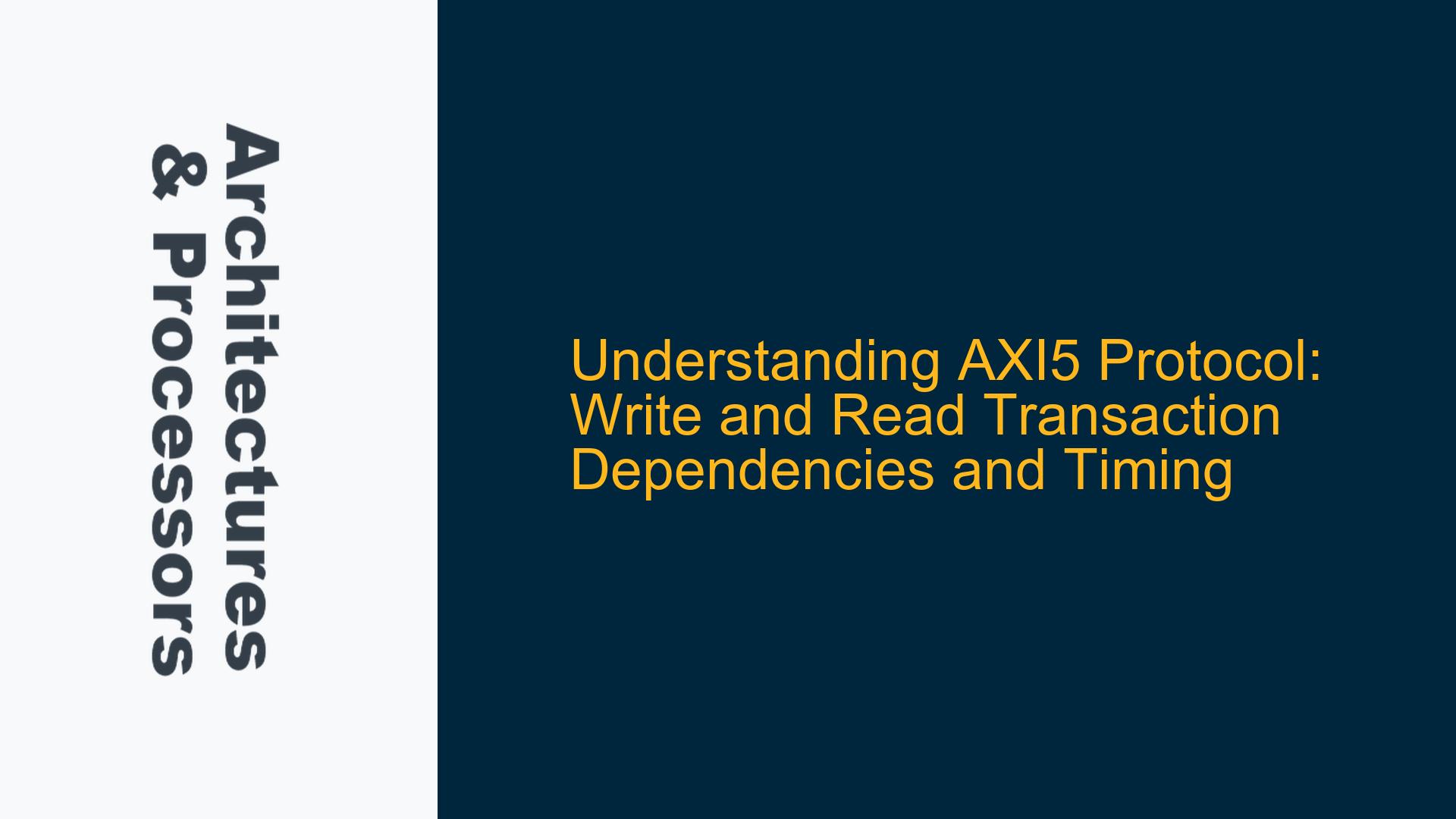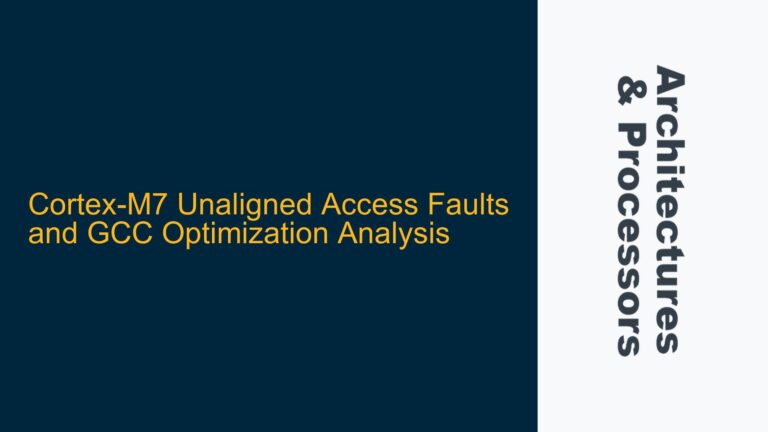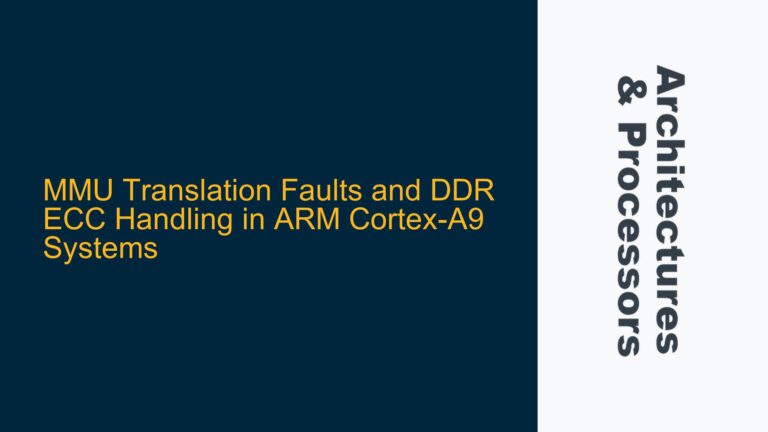ARM AXI5 Protocol Requirements for Write and Read Transactions
The ARM AXI5 protocol, as defined in the AMBA® AXI Protocol Specification (IHI0022K, A3.4), imposes specific requirements on how managers (masters) handle write and read transactions. These requirements are designed to ensure efficient and predictable data flow within the system, minimizing latency and avoiding deadlocks. The protocol mandates that a manager must be capable of providing all write data for a transaction without relying on the completion of other transactions from the same manager. Similarly, once a manager has issued a write request and all associated write data, it must be able to accept all responses for that transaction independently of other transactions. For read transactions, the manager must be able to accept all read data for the transaction without dependencies on other transactions, although it can rely on read data returning in order for transactions with the same ID.
The protocol’s emphasis on transaction independence is crucial for maintaining system performance. For instance, if a manager were to issue a write transaction without having all the necessary data available, it could lead to significant delays, especially if the data is dependent on the completion of other transactions. This could result in the stalling of downstream logic, causing inefficiencies and potential bottlenecks. The same logic applies to read transactions; if a manager cannot accept read data independently, it could lead to similar delays and inefficiencies.
Potential Issues with Write and Read Transaction Dependencies
One of the primary issues that can arise when dealing with AXI5 transactions is the improper handling of dependencies between write and read transactions. For example, consider a scenario where a manager issues a burst read request for 16 data pieces, increments each by 1, and then attempts to write them back. If the manager starts processing the first data piece and issues a burst write request before receiving all 16 data pieces, it could lead to a situation where the manager is unable to provide all the write data independently. This would violate the AXI5 protocol requirements, as the manager would be dependent on the completion of the read transaction to provide the write data.
Another potential issue is the incorrect use of the WVALID and RREADY signals. The WVALID signal indicates that the write data is valid and should remain high until the burst is completed. However, the protocol allows for WVALID to be driven low during stalled cycles, but not due to dependencies on other transactions. Similarly, the RREADY signal indicates that the manager is ready to accept read data. While RREADY can go low during read transaction sequences, this should only be due to small delays, such as those introduced by clock domain crossings, and not because the manager is waiting for other transactions to complete.
Implementing AXI5-Compliant Write and Read Transaction Handling
To ensure compliance with the AXI5 protocol, managers must be designed to handle write and read transactions independently. This involves ensuring that all write data is available before issuing a write request and that the manager can accept all responses for that transaction without relying on other transactions. For read transactions, the manager must be capable of accepting all read data independently, although it can rely on read data returning in order for transactions with the same ID.
One approach to achieving this is to implement sufficient buffering within the manager to store all the data for a transaction before issuing the request. For example, in the case of a burst read request for 16 data pieces, the manager should have enough storage to hold all 16 data pieces before initiating the write transaction. This ensures that the manager can provide all the write data independently, without relying on the completion of the read transaction.
Additionally, the manager should be designed to handle stalled cycles correctly. For write transactions, WVALID can be driven low during stalled cycles, but this should not be due to dependencies on other transactions. Similarly, for read transactions, RREADY can go low during stalled cycles, but only due to small delays, such as those introduced by clock domain crossings.
In summary, ensuring compliance with the AXI5 protocol requires careful design of the manager to handle write and read transactions independently, with sufficient buffering to store all data for a transaction before issuing the request. Proper handling of the WVALID and RREADY signals is also crucial, ensuring that these signals are only driven low due to small delays and not because of dependencies on other transactions. By following these guidelines, designers can avoid the pitfalls associated with transaction dependencies and ensure efficient and predictable data flow within their systems.






